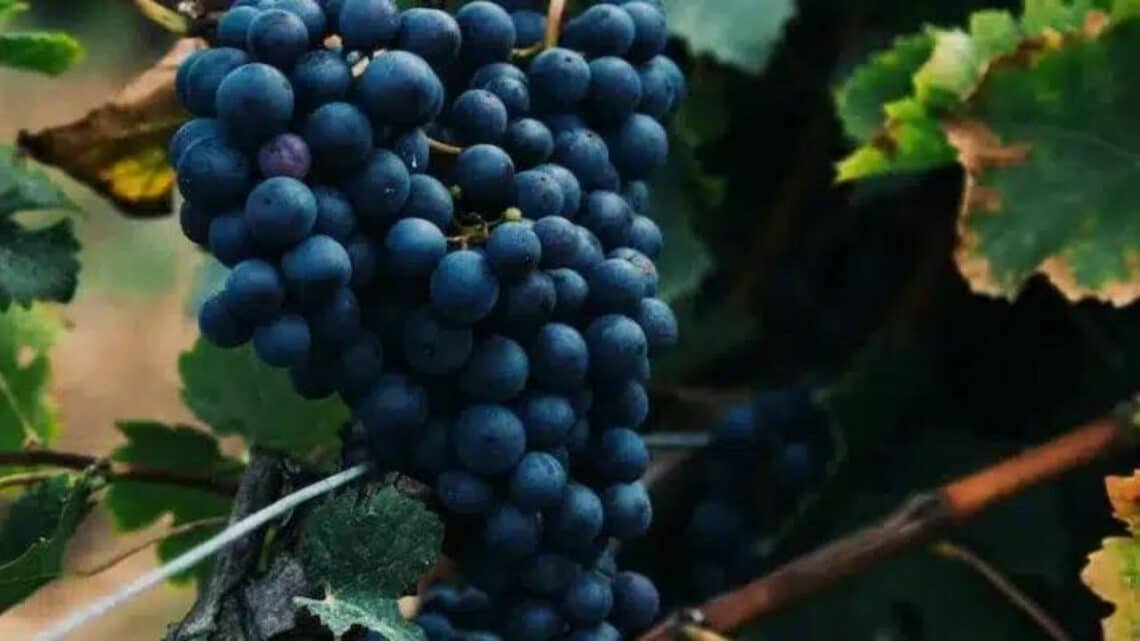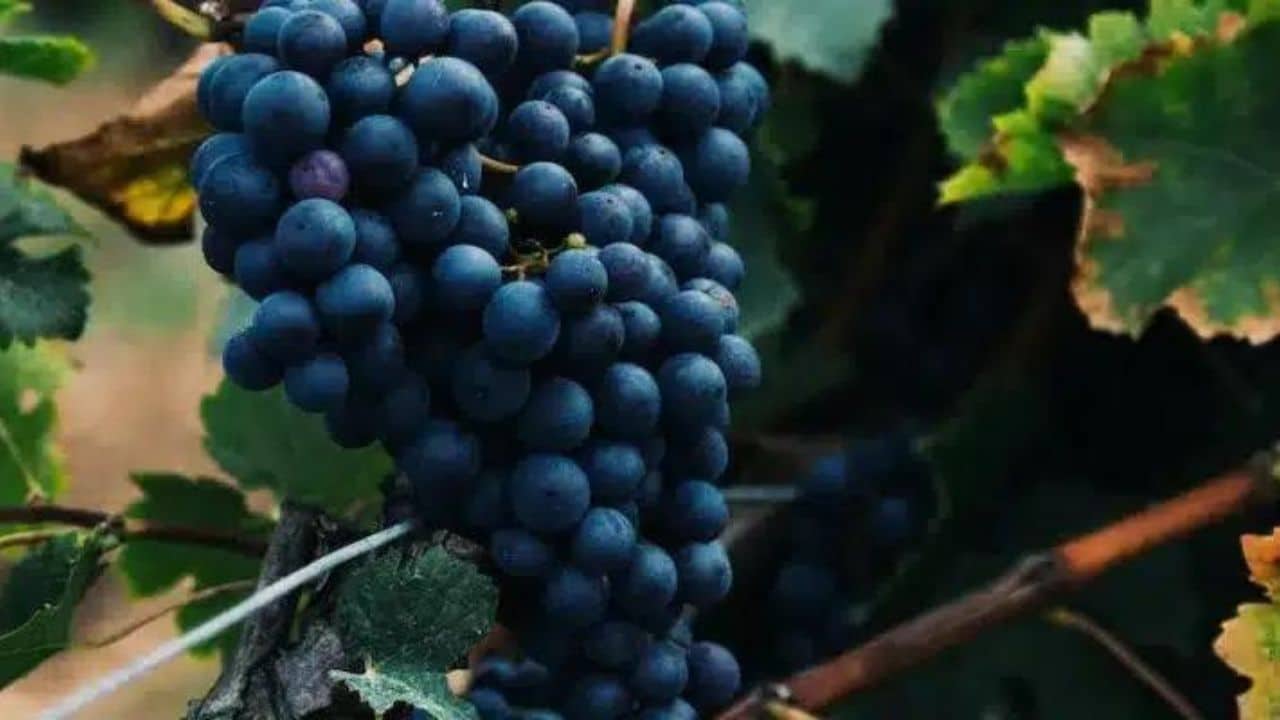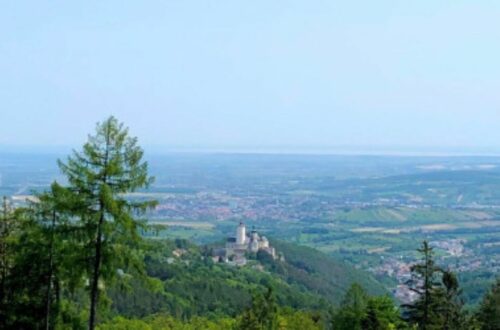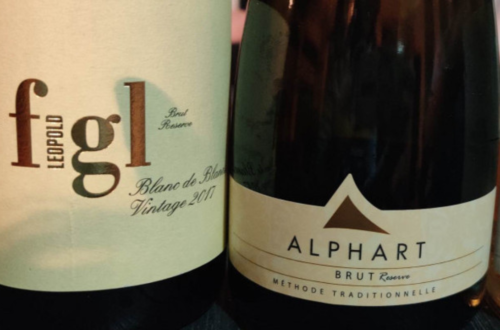
What is Austria’s signature red grape?
Austria is best known for the quality of its white wines, made from both native Grüner Veltliner and Riesling. However, it also produces excellent red wines from local grape varieties such as Zweigelt and Blaufränkisch, as well as dessert wines made from welschriesling.
In Austria, grape varieties don’t respect political boarders. If you want to know why, check out my post on the history of wine in Austria. For instance, Grüner Veltliner is found in Hungary as well. Same goes for Blaufränkisch.
A quick word on climate : as the Alps cover the entire west of Austria, the wine-growing areas are logically located in the east of the country. They enjoy a cool continental climate, with short summers and very harsh winters. The northernmost regions are cooled by northerly winds, while those closer to the Hungarian border are warmed by easterly winds. Annual weather variations are much smaller than in northern Europe.
Zweigelt is Austria’s most significant red grape variety
Zweigelt is Austria’s most significant red grape variety. In Austria, it is known as Blauer Zwiegelt. This grape variety was created by Dr Fritz Zweigelt in 1922, by crossing Blaufränkisch and Sankt Laurent.
Zwiegelt ripens easily and early. It is sensitive to frost and diseases.
Wines made from Zweigelt usually have cherry fruit aromas and are best drank in their youth.
If you want to know more, check out my article on Zweigelt.
My personal favourite : Blaufränkisch
Blaufränkisch is the same variety as hungarish Kékfranco and Germany’s Kemberger. It is one of Austria’s leading varieties.
It is a late-ripening grape which needs warm thick soils (a bit like Cabernet Sauvignon in Bordeaux). With its thick skin, it is resistant to diseases and rot.
Like Riesling, Blaufränkisch is very sensitive to the soils. It will present different styles of wines depending if it is grown on the limestone of Leithaberg or on the rich deep soils of Mittelburgenland. The former will produce elegant wines whereas the latter will produce full-bodied ans spicy wines.
In Südburgenland, wines from Blaufränkisch will be refined.
In Carnuntum, which has a cooler climate than Burgenland for example, wines present red fruit aromas too.
Concerning the vinification style has changed over the years. In the 90s, just like in Bordeaux for example, wines were heavily oaked and thus were very powerful and concentrated.
Today, consumers are looking the more drinkable wines and balance has become the priority. Wines tend to be less oaky and show more finess.
So Blaufränkisch are usually vinifed fairly simply and are fruity wine rounded by ageing in big casks, sometimes denser with greater ageing potential.
Wines made from Blaufränkisch usually present aromas of black fruit and are high flavoured.
Style has changed over the years : in 1990s it was more fashionable to produce heavily oaked wines with maximum power and concentration, and they were generally rewarded high scores. Today, producers and critics have realised that drinkability and balance should be the major criteria and today, the wines are less oaky and show more finesse.
Saint-Laurent, the Austrian Pinot Noir
The oldest vines of Saint-Laurent are in Tattendorf and date from 1950s!
In the last century, Saint-Laurent was believed to come from the village of Saint-Laurent in Médoc. However, recently ampleographers have linked it to Burgundy. It takes it name from the birth date of Saint Laurentius, which is celebrated on the 10th of August, date when it usually ripens.
Saint-Laurent has the same aroma profile than Pinot Noir, however no link exists between these two grape varieties.
It likes best poor, cool and stony soil, usually well-drained. Indeed, the bunches are compact, which makes it sensitive to rot. Good drainage is essential to avoid rot.
It has a high pH so producers will want to look out for brettanonyces.
What about the other red grape varieties in Austria?
Austria is home to many other grapes varieties :
- Blauburger : was invented by Dr Zwiegelt as well, by crossing between Blauer Portugieser and Blaufrankisch. It produces deep-coloured wines, which tend to be neutral and light however, with little tanin or acidity. This doesn’t make it wines to keep. Moreover, this grape variety is sensitive to frost and mildew. Not many producers use it.
- Blauer Burgunder is the Austrian name for Pinot Noir. Austria has a long-standing history with Pinot Noir. Indeed, vines were brought by Cistercian monks at Mönchof in the 14th century. It thrives best on chalky soils, such as Gols in Burgenland. This region is warmer than Burgundy so the vines need protection from sun exposure. It is sensitive to late frosts. It is also produced in Kamptal and Thermenregion.
- Blauer Portugieser comes from Austria, despite its name. It ripens early and has large yields.
- Blauer Wildbacher is mostly found in Weststeiermark, where it is used mostly for rosés.. It is an acient variety sensitive to frost and rot. It ripens late and yields are moderate.
- Cabernet Franc represents 74ha of vines and is mostly found in blends.
- Cabernet Sauvignon represents 590ha. However, due to Austria’s cold climate, it does not ripen regularly. It is mostly found in the warmest region of Austria, ie Burgenland but can also be found in Thermenregion.
- Merlot is mostly found in Lower Austria and Burgenland. it is often blended.
- Rösler is made by one winerie : Steyrer in Traisental. It has a deep colour and is resistant to frost and mildew.
- Syrah represents 152ha in Burgenland.
Conclusion : What is Austria’s signature red grape?
For me, Austria has three main red grape varieties.
Zweigelt is the most significant one. Blaufrankisch is very much represented and can be produced in different styles. it is my personal favourite. Saint-Laurent is better suited than Pinot Noir to Austrian conditions, and produces very similar wines.
If you want to discover these indigenous varieties, I suggest you sign up to an exclusive experience in an old cellar in the heart of Vienna.







